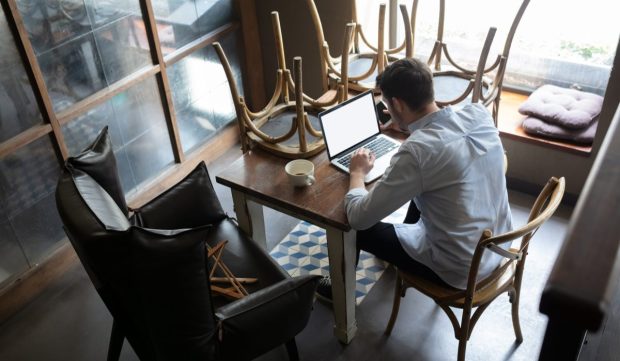Restaurants Jumped On Curbside Pickup, Now They Need to Fix Outdated Back-of-the-House Tech

As restaurants’ front-of-house operations have barreled into the future with increasingly frictionless consumer-facing digital technologies, the back of house is still stuck in the past. Instead of leading-edge digital platforms, restaurant operators are often left to deal with checks, postage stamps and stacks of physical documents.
Notch, a business-to-business (B2B) wholesale food and beverage marketplace for restaurants and distributors, announced earlier this month the launch of a new payment platform, notchPay, with an eye towards increasing payment speed and efficiency. CEO Jordan Huck spoke with PYMNTS about the challenges facing restaurant operators and distributors today.
Related news: Restaurant Marketplace Launches B2B Payment Platform notchPay
“For a typical restaurant, between front of house and back of house, they’ll [have] anywhere between seven and 10 different wholesale distributor relationships, from alcohol to meat to seafood, to dairy, to produce,” he said. “Essentially, procurement will happen to those distributors in an offline manner. We’re going to use text or even email. I’m not going to have the ability to browse the full catalog. This is an industry that still exists off price sheets.”
Huck added that the paper invoices used in this process can take over a month to pay out and that 50% of these payments are made via check.
“From the moment procurement occurs to the moment I actually update my system that I’ve cut a check,” he said, “there’s just a tremendous amount of friction.”
The Ripple Effects
These B2B payments play a central role in restaurant operations, and Huck argues that digitizing them can improve many other restaurant processes. Specifically, he said that digital invoicing removes friction from the inventory management process, automatically updating systems with information about transactions, and that it simplifies bookkeeping by integrating with systems like Quickbooks.
Research from PYMNTS’ January 2022 study, “The Strategic Role Of The CFO Playbook,” created in collaboration with Versapay, found that 95% of wholesale trade CFOs believe that digitizing accounts receivable (AR) and accounts payable (AP) will benefit customers and vendors, 60% expect it to provide a provide more transparent process, 55% expect it to boost efficiency and 52% expect it to better integrate AR and AP functions.
Read more: Report: CFOs See Digital AR/AP as Best Way to Boost Efficiency and Transparency
However, the study found that half of them believe that it is difficult to find the right technology for digitizing AR and AP, and 77% believe that lack of in-house expertise presents an obstacle to digitization.
Fewer Hours, Fewer Problems
Restaurants across the industry are facing a challenging labor market. Demand is higher than before the pandemic, with consumers both seeking out dine-in experiences and frequently ordering restaurant meals for off-premises consumption, but the workforce is smaller.
According to Census Bureau data on advance monthly sales at food services and drinking places in January, the most recent month on record, seasonally sales were up 33% over 2021 levels — and even up 12% from February 2020.
However, Bureau of Labor Statistics data show that staffing levels have not kept up with this growth: the number of employees at food services and drinking places (i.e., restaurants and bars) in February was up only 14% from February 2021 and down 7% from February 2020.
Huck noted that, by reducing the work it takes to send and receive payments and by bringing the entire system online, restaurants can gain back much-needed hours during a period when time is a highly limited resource.
“There’s nothing that these restaurant operators hate more than just the manual work of entering invoices like that,” he said. “That is just not the work that any of these businesses want to spend time doing.”
Moreover, he contended that distributors see a similar benefit, with AR digitization allowing them to cut out the time it takes to input credit cards and other payment information.
Just the Beginning
Even though restaurants are, by and large, much more digitized than were in the first couple months of 2020, when it comes to digitization, much of the industry still relies on outdated processes.
“We’re at the very early innings of digital adoption, so we think overall [software-as-a-service] penetration — restaurants using just software to automate a lot of the functions that they use — is dramatically underutilized,” Huck said.
Looking ahead, he is excited about the explosion of technology in B2B payments, and he predicts the space will advance significantly in the near future.
“People don’t realize how much commerce is still done, specifically in B2B, through means like check and paper invoices,” he said. “[In one year, I hope] that tipping effect would have occurred where you start to see it being easier to pay for things wholesale [digitally] than it would be to pay offline.”
